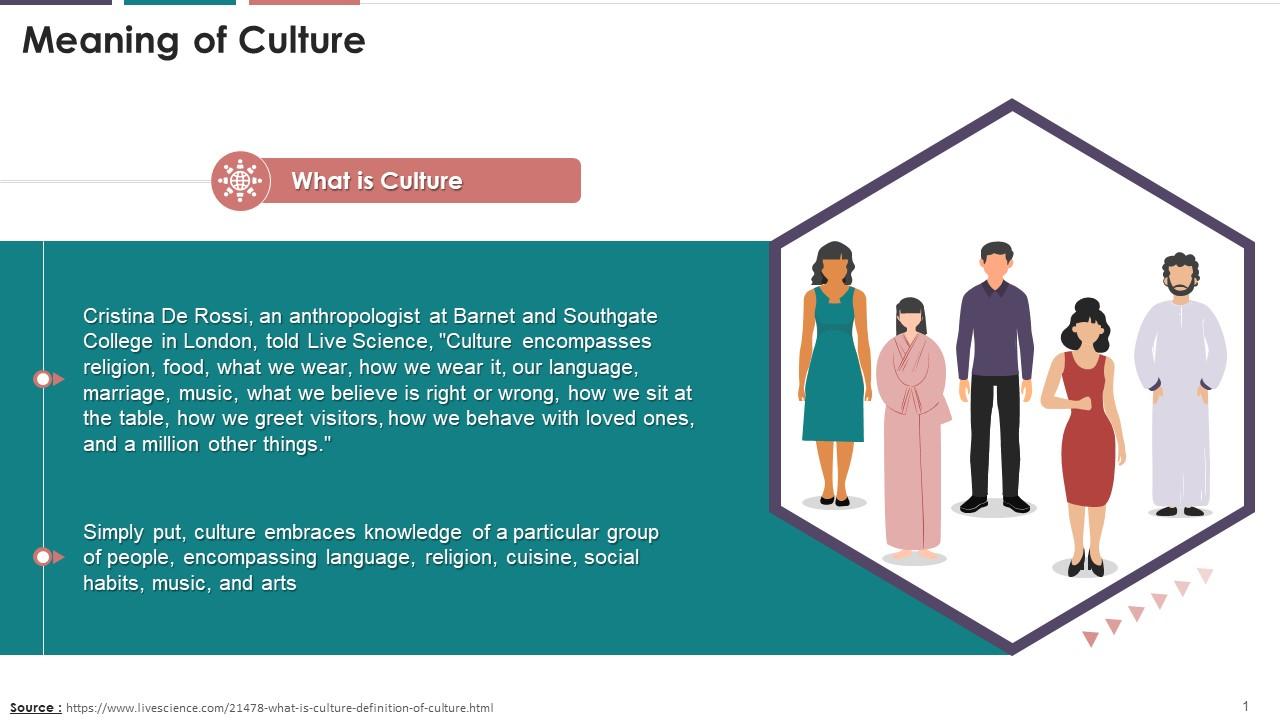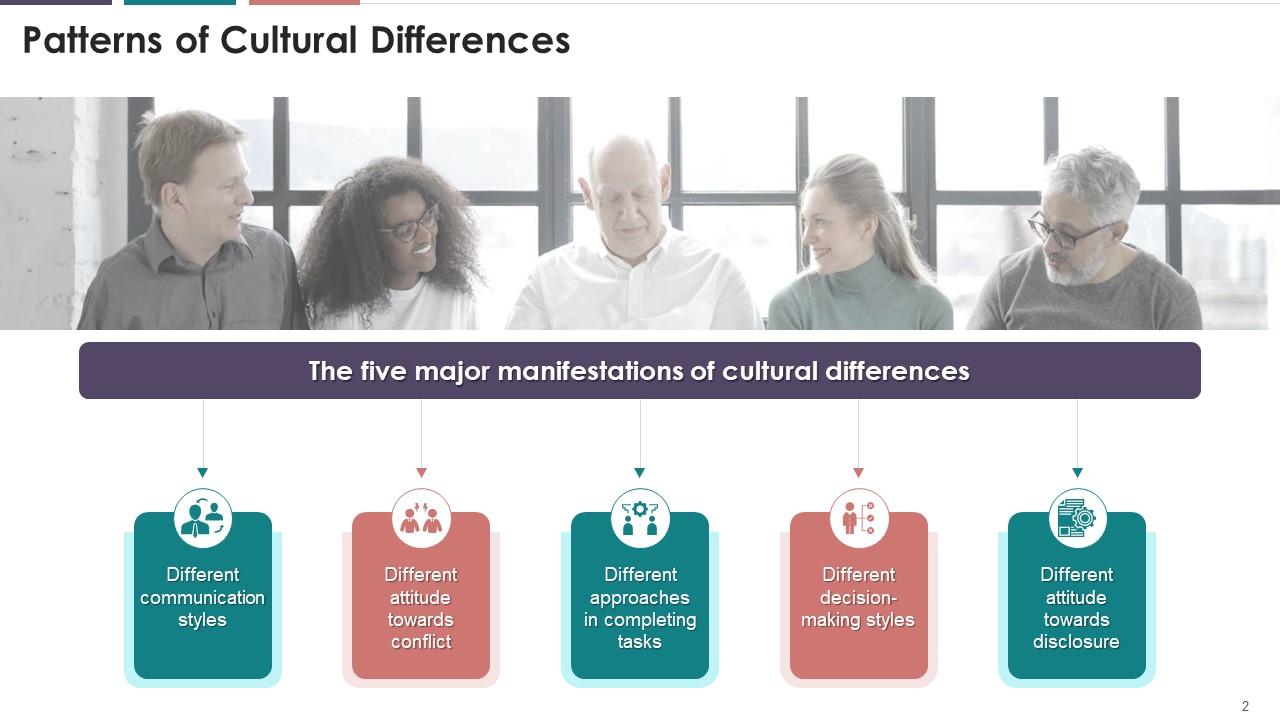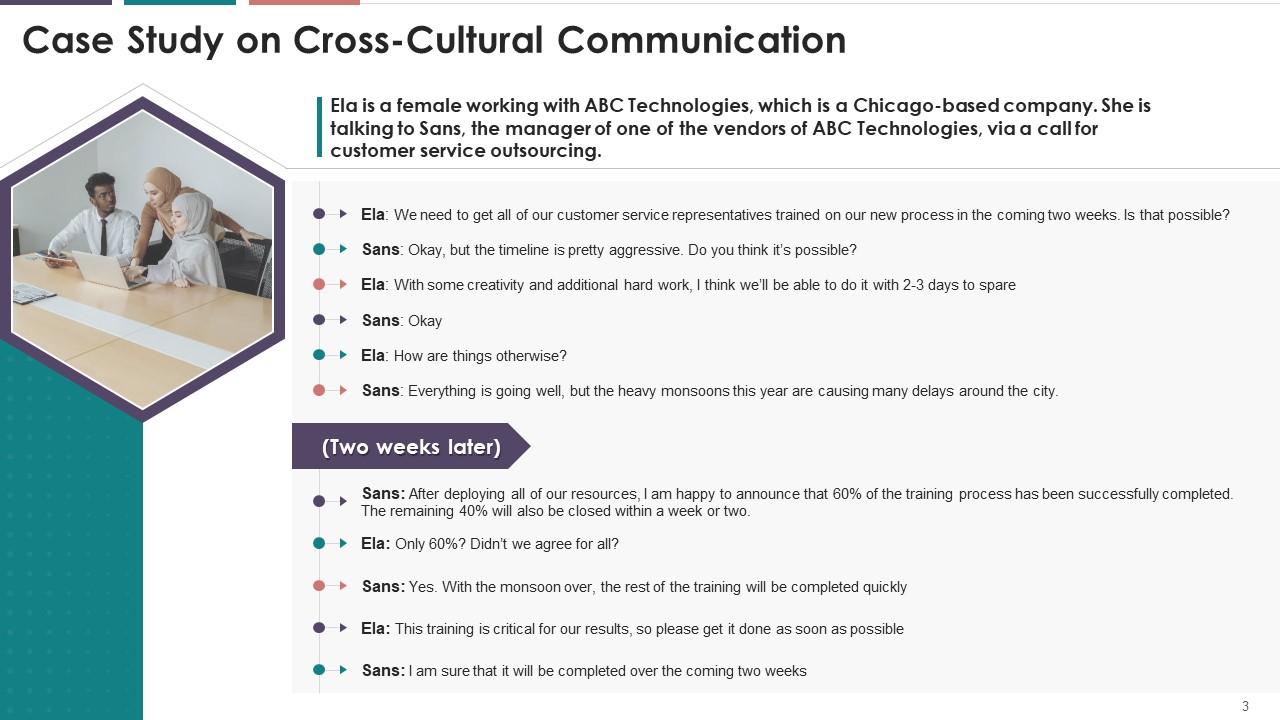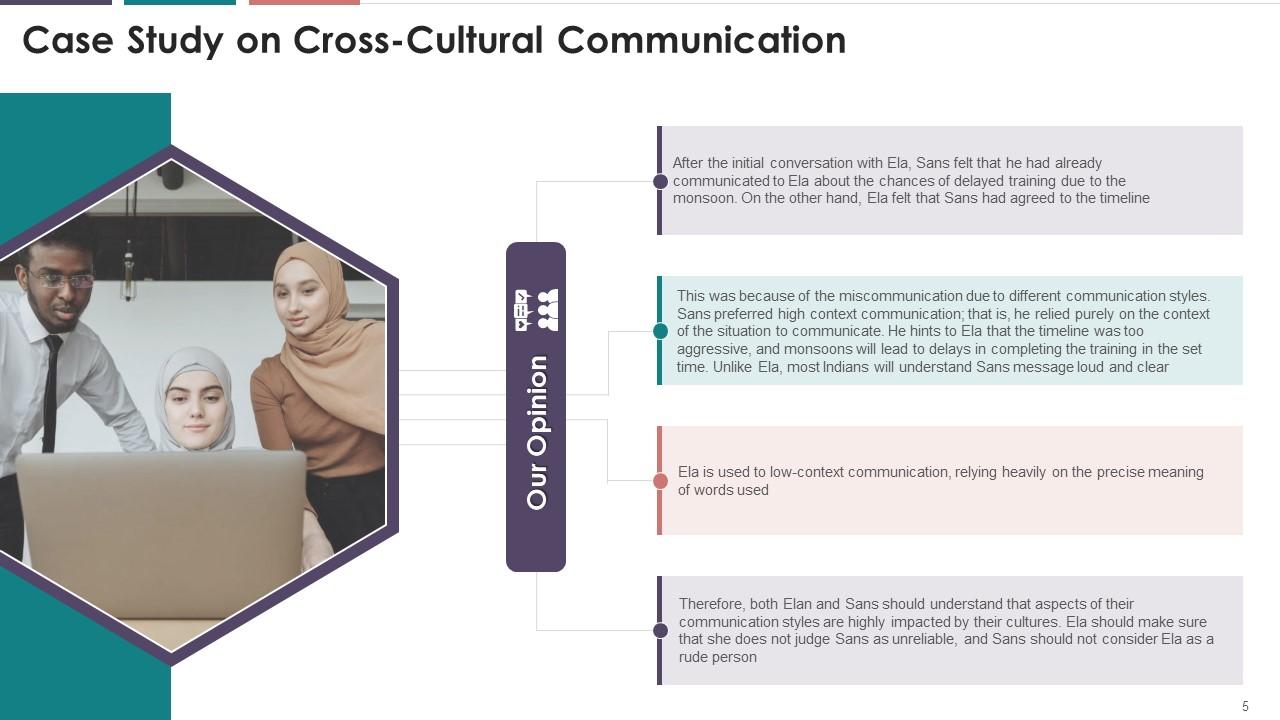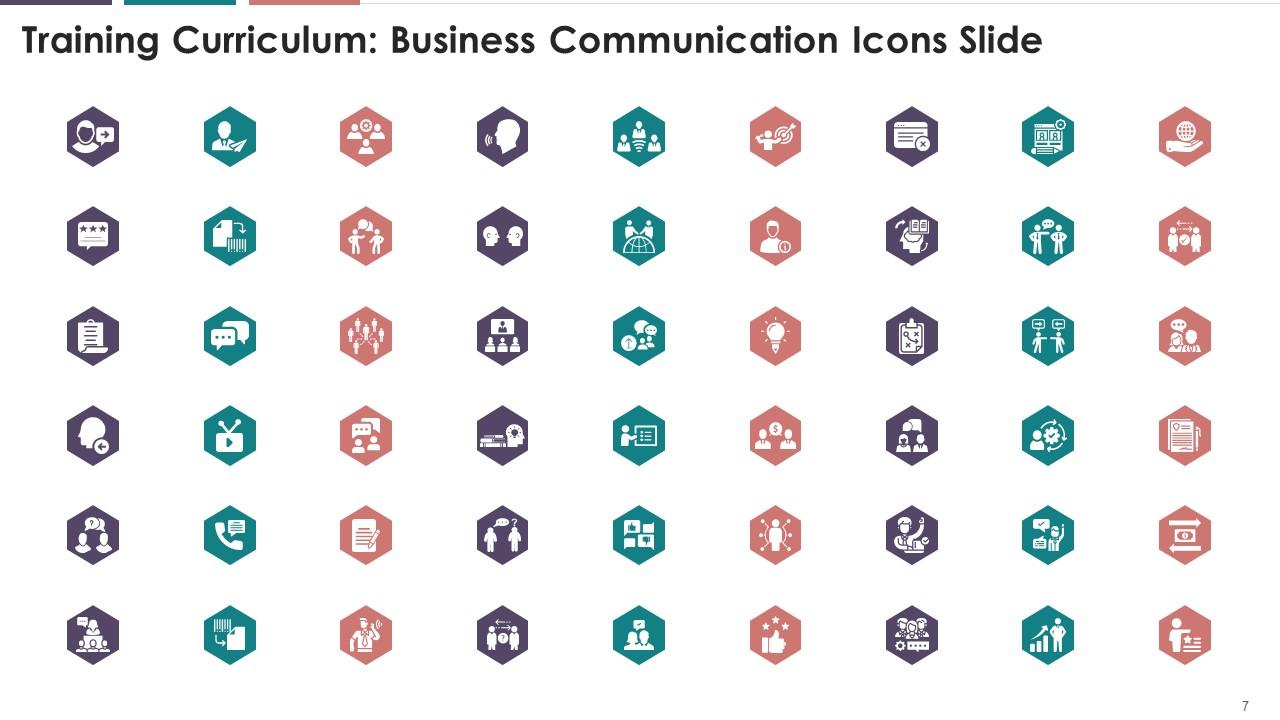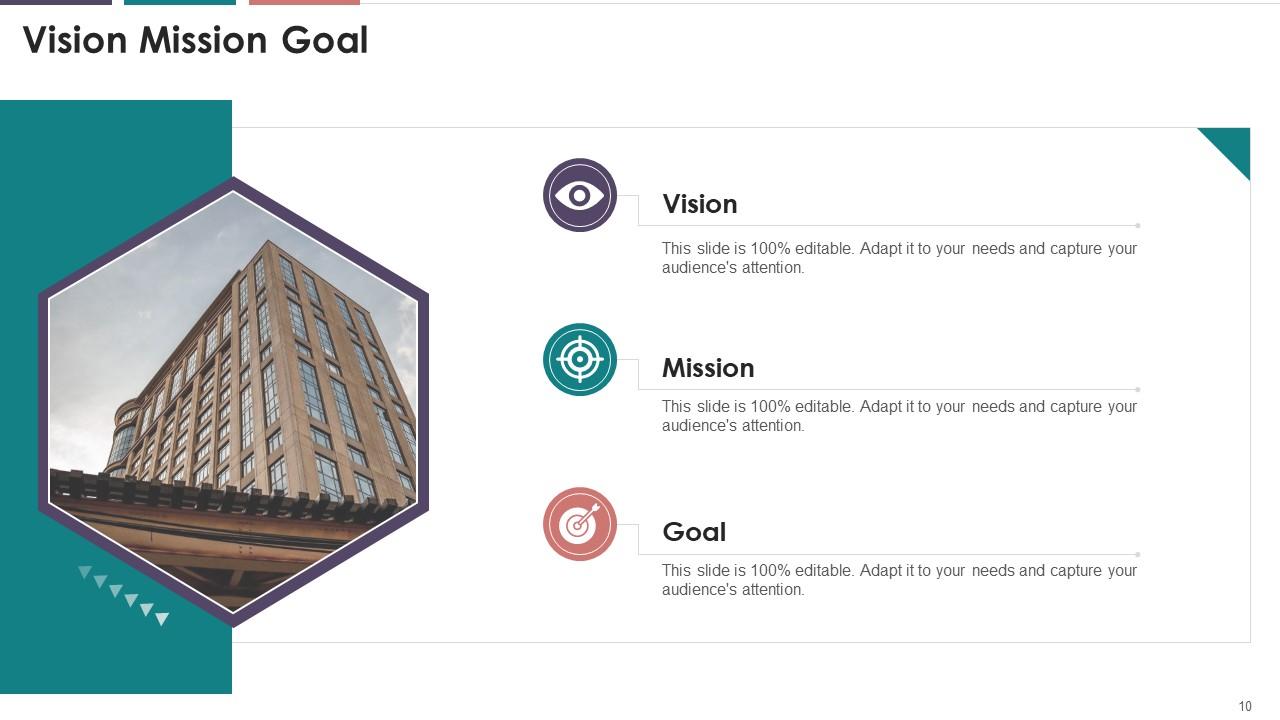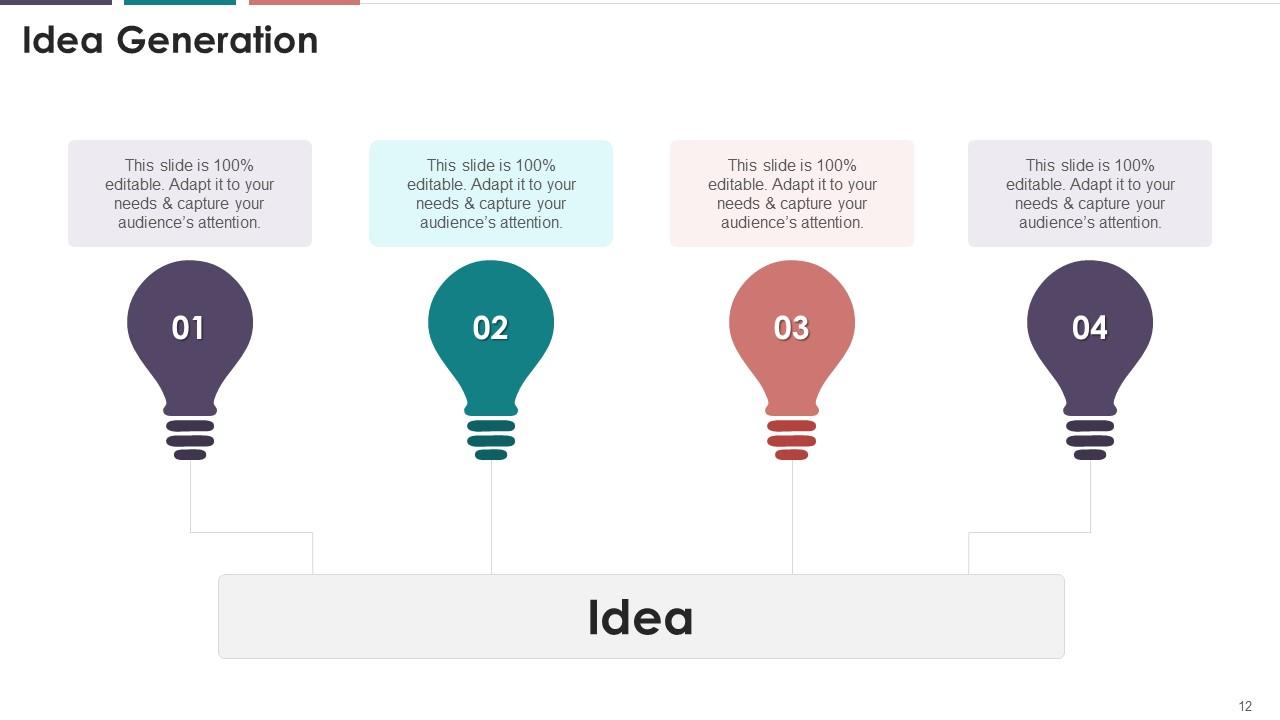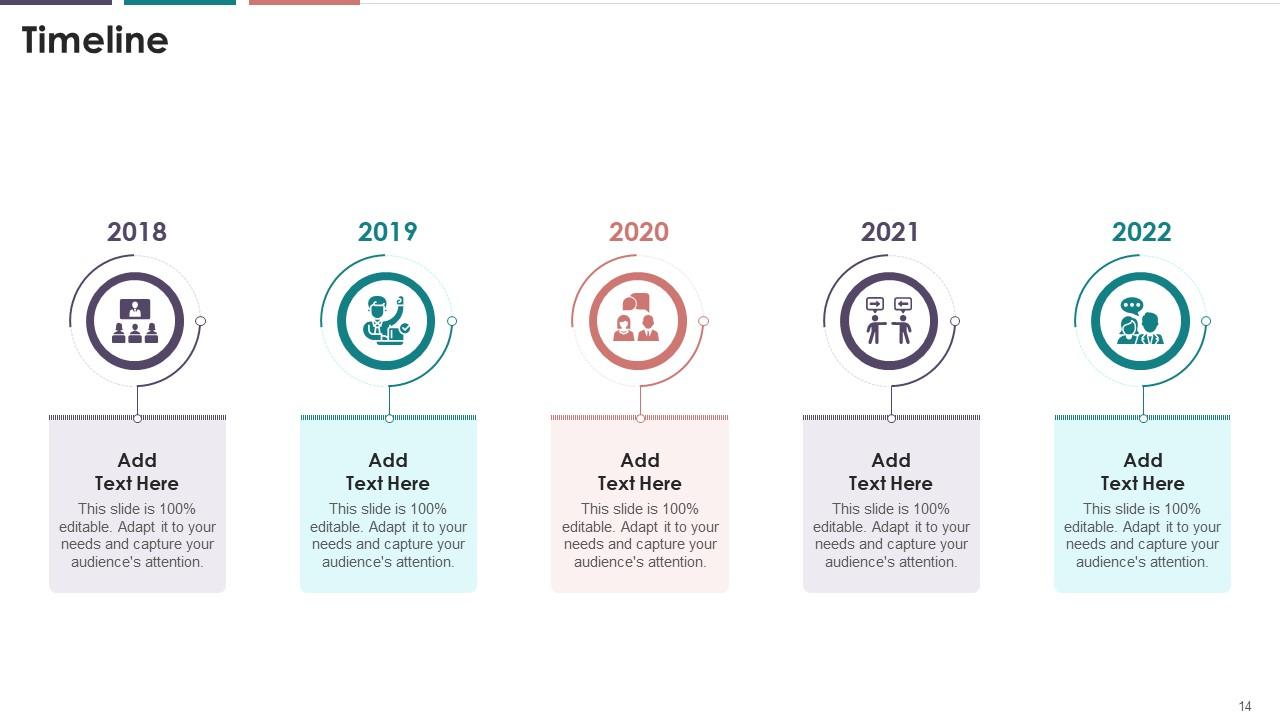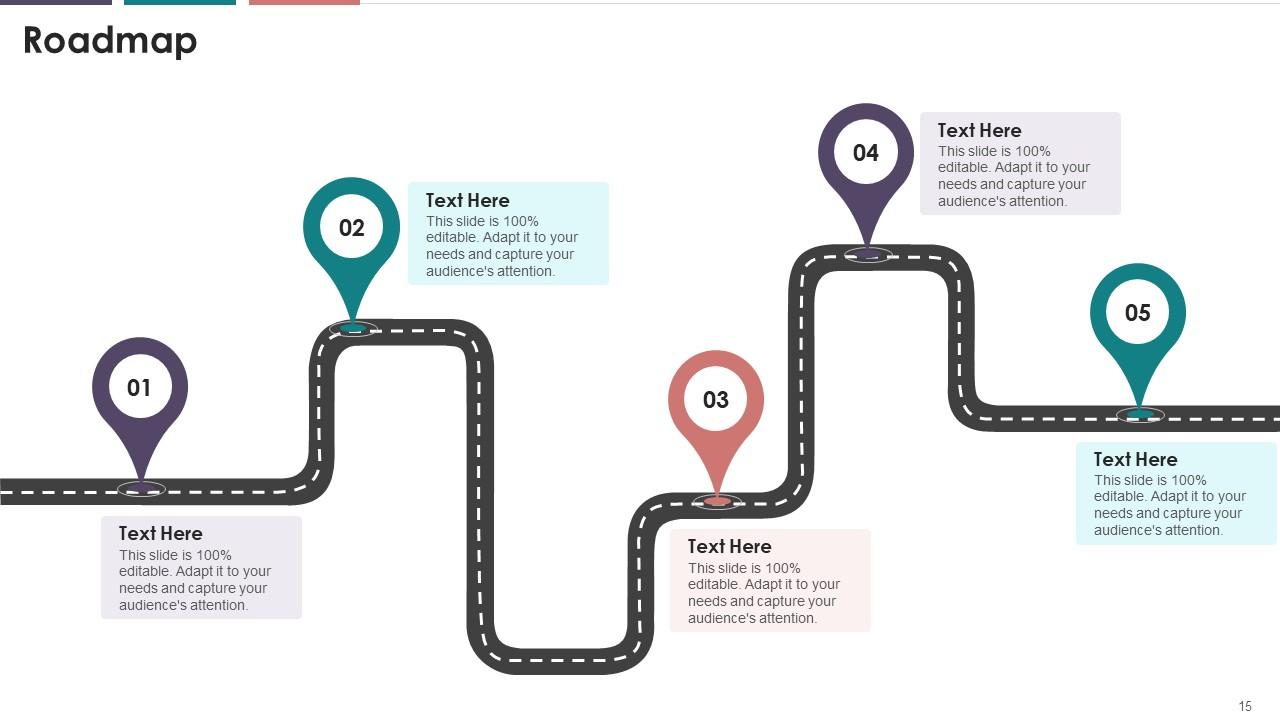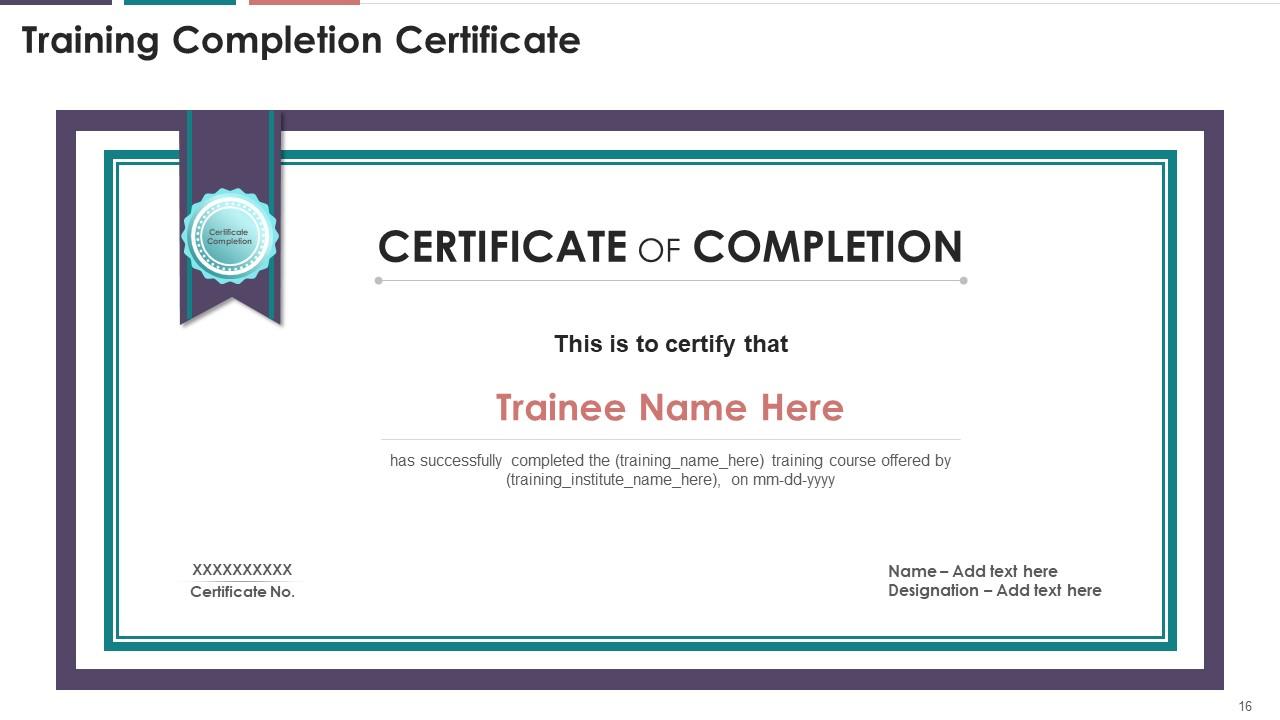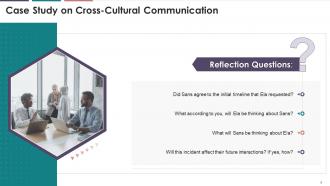Meaning Of Culture With Exercise On Cultural Differences And Cross Cultural Communication Training Ppt
These slides cover the concept of culture. It contains information on common reasons that leads to cultural differences, such as different communication styles, attitudes towards conflict, approaches to completing tasks, decision-making styles, attitudes towards disclosure, and different approaches to knowing. It also includes a case study on cross-cultural communication in the workplace.
These slides cover the concept of culture. It contains information on common reasons that leads to cultural differences, su..
- Google Slides is a new FREE Presentation software from Google.
- All our content is 100% compatible with Google Slides.
- Just download our designs, and upload them to Google Slides and they will work automatically.
- Amaze your audience with SlideTeam and Google Slides.
-
Want Changes to This PPT Slide? Check out our Presentation Design Services
- WideScreen Aspect ratio is becoming a very popular format. When you download this product, the downloaded ZIP will contain this product in both standard and widescreen format.
-

- Some older products that we have may only be in standard format, but they can easily be converted to widescreen.
- To do this, please open the SlideTeam product in Powerpoint, and go to
- Design ( On the top bar) -> Page Setup -> and select "On-screen Show (16:9)” in the drop down for "Slides Sized for".
- The slide or theme will change to widescreen, and all graphics will adjust automatically. You can similarly convert our content to any other desired screen aspect ratio.
Compatible With Google Slides

Get This In WideScreen
You must be logged in to download this presentation.
PowerPoint presentation slides
Presenting Meaning of Culture with Exercise on Cultural Differences and Cross-Cultural Communication. These slides are 100 percent made in PowerPoint and are compatible with all screen types and monitors. They also support Google Slides. Premium Customer Support is available. Suitable for use by managers, employees, and organizations. These slides are easily customizable. You can edit the color, text, icon, and font size to suit your requirements.
People who downloaded this PowerPoint presentation also viewed the following :
Content of this Powerpoint Presentation
Slide 1
This slide explains the meaning of culture.
Slide 2
This slide mentions the most common reasons for cultural differences, such as different communication styles, attitudes towards conflict, approaches to completing tasks, decision-making styles, attitudes towards disclosure, and different approaches to knowing.
Instructor’s Notes:
- Different communication styles: Communication styles vary widely between cultures. There are various aspects in which communication differs, out of which, one of the vital aspects is language usage. Across different cultures, different words and phrases are used in various ways. Taking an example, the meaning of the word "Yes" varies from 'definitely' to 'may be' or 'i'll consider' in different cultures. Another factor that should be given importance in communication style is non-verbal communication. It includes not only facial expressions or gestures, but many other factors like distance, space, etc.. Many other aspects of communication differ from culture to culture, so understanding the cultural differences and accepting them is the best way to avoid miscommunication
- Different attitude towards conflict: Different people have different attitudes toward the situation of a conflict. Some cultures view it as positive, while others view it as something to be avoided. For Example, in the U.S., conflict is not usually desirable; but people are encouraged to deal directly with disputes that arise. In fact, they prefer face-to-face meetings to work out the existing issues. Whereas in the Eastern countries, conflict is experienced as embarrassing or demeaning, and the differences are best worked out quietly. They think that a written exchange is a favored means to address the conflict
- Different approaches in completing tasks: People from different cultures choose different ways of completing their tasks. Such differences might be due to varying perspectives about work or relationship building, different mindsets, patterns, and varied ideas about tasks allocated. For example, the Asian and Hispanic cultures attach more value to establishing relationships within a team at the very beginning of the project and then focusing entirely on the completion of the task till the end. On the other hand, European-Americans prioritize work initially and let relationships develop during the tenure of the task. This does not reflect non-seriousness towards the job from people belonging to any one of these cultural backgrounds or valuing relationships more or less; it simply means that they may have different ways and priorities
- Different decision-making styles: The decision-making criteria vary widely across different cultures. For example, North Americans delegate the decisions frequently, meaning an official passes the responsibility for some matter to a subordinate. Whereas the Southern European and Latin American countries place a strong value on taking decision oneself. The organization should always know that the individual's expectations about their role shapes the decision, which its culture might highly influence
- Different attitude towards disclosure: While dealing with a conflict, an individual should be mindful that people differ in the comfort regarding disclosure. Not every person who is a part of a conflict feels comfortable revealing or discussing it. Questions that one person feels comfortable asking might be intrusive to others. So, attitude towards disclosure is also something to be considered along with other factors
Slide 3 to 5
This slide illustrates a case study on cross-cultural communication.
Meaning Of Culture With Exercise On Cultural Differences And Cross Cultural Communication Training Ppt with all 21 slides:
Use our Meaning Of Culture With Exercise On Cultural Differences And Cross Cultural Communication Training Ppt to effectively help you save your valuable time. They are readymade to fit into any presentation structure.
-
Love the template collection they have! I have prepared for my meetings much faster without worrying about designing a whole presentation from scratch.
-
Design layout is very impressive.


